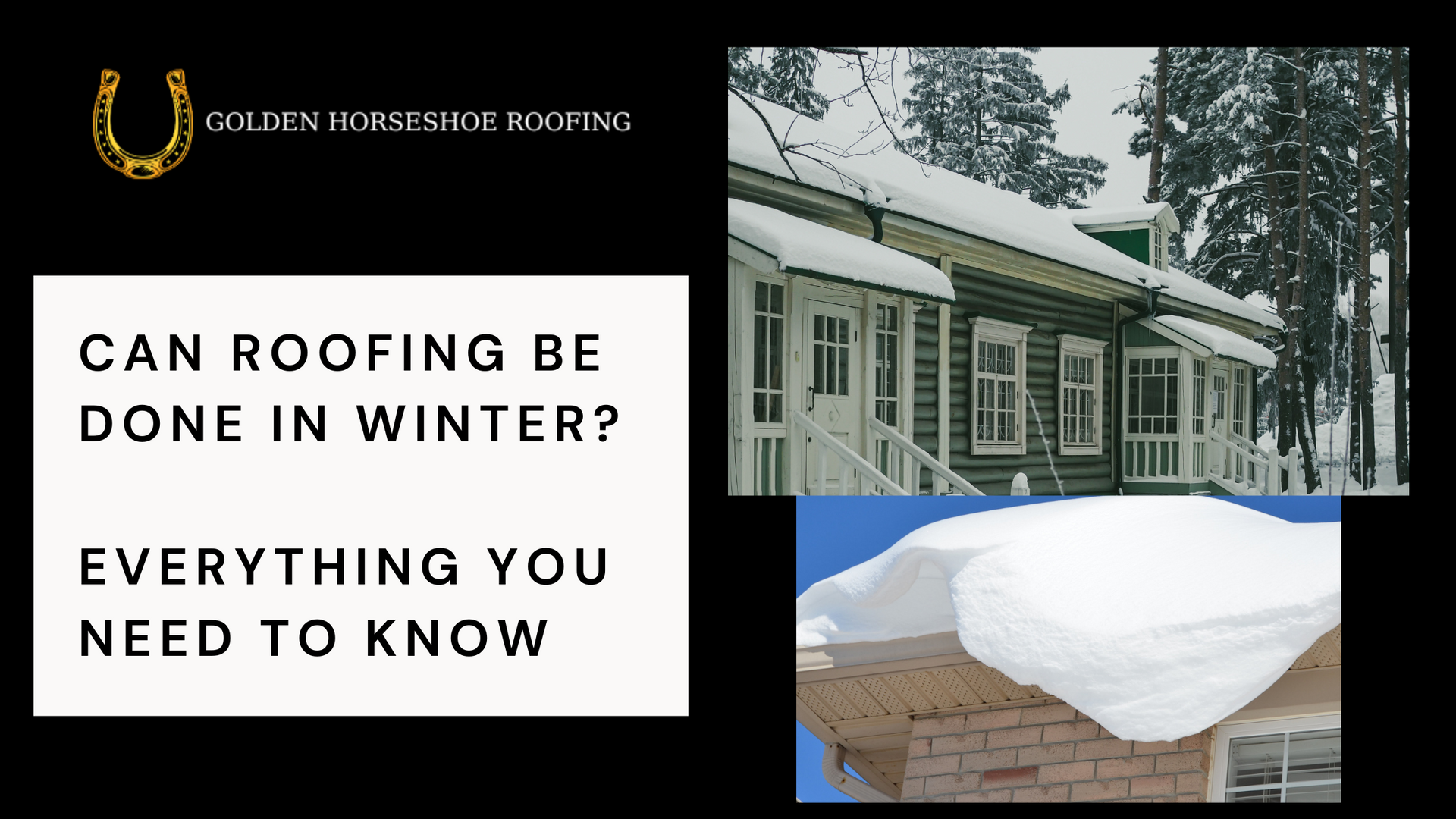Can Roofing Be Done in Winter?
Everything you need to know:

Winter might seem like an unusual time to tackle roofing projects, but sometimes waiting for spring isn’t an option. Issues like leaks or storm damage demand immediate attention, regardless of the season. The good news? With the right materials, techniques, and a skilled team, roofing work can be successfully completed even in the colder months. Let’s take a closer look at the challenges, benefits, and best practices of winter roofing.
Can You Replace a Roof in Winter? Absolutely.
Despite what many people think, roofing during winter is not only possible but often necessary. Professional roofing contractors are equipped to handle the demands of cold-weather projects, ensuring the work is done efficiently and safely. That said, there are important considerations to keep in mind for a successful outcome.
Challenges of Winter Roofing
1. Cold Weather and Material Performance
- Shingles: Asphalt shingles, for example, become less flexible in temperatures below 5°C, making them more susceptible to cracks during installation. Roofers mitigate this by handling materials with care and using cold-weather adhesives that provide strong bonds despite the chill.
- Sealants: Many sealants require warmth to cure properly, so contractors may use heat guns or schedule application during the warmest part of the day to ensure the best results.
2. Safety Concerns
- Ice and snow create slippery surfaces, increasing the risk of accidents. Professional roofers address this by clearing snow and ice from work areas, wearing specialized safety gear, and following strict protocols to prevent falls.
3. Weather Delays
- Winter weather is notoriously unpredictable. Snowstorms or strong winds can disrupt progress, but experienced contractors plan for these interruptions to keep projects on track.
Benefits of Winter Roofing
1. Timely Problem Solving
- Ignoring roof issues during winter can lead to larger problems. A small leak can quickly escalate, causing water damage to your home’s insulation, walls, and ceilings. Fixing these issues now can save you from more costly repairs down the line.
2. Flexible Scheduling
- The slower winter season means roofing contractors have more availability. This can make it easier to book your project at a time that works for you—potentially at a more competitive rate.
3. Be Ready for Spring
- Completing roof repairs or replacements in winter ensures your home is prepared for spring rains and melting snow, reducing the risk of water damage when the seasons change.
Best Practices for Winter Roofing
1. Opt for Cold-Weather Materials
Some roofing materials perform better in winter than others. Consider:
- Metal Roofing: Durable and unaffected by freezing temperatures.
- Modified Bitumen: Ideal for flat roofs, as it stays flexible in the cold.
- Cold-Weather Adhesives: Designed to provide strong bonds even in freezing conditions.
2. Hire Skilled Contractors
- Winter roofing is not for amateurs. Look for a team with experience working in cold conditions who understand how to handle materials and prioritize safety.
3. Time It Right
- Aim to schedule work on days with mild weather. Sunny, calm days are ideal, as they reduce safety risks and make installation easier.
Frequently Asked Questions About Winter Roofing
1. Can a roof be replaced in winter?
- Yes! With proper preparation and the right techniques, roof replacement is entirely possible, even in cold weather.
2. Is winter roofing more expensive?
- Not necessarily. In fact, the slower season often leads to more competitive pricing from roofing companies.
3. How do roofers deal with ice and snow?
- Professional roofers clear ice and snow before starting and use safety equipment to ensure secure footing, minimizing risks during the job.
Don’t Wait to Fix Winter Roofing Problems
If your roof has leaks, missing shingles, or visible sagging, don’t put off repairs until spring. Ignoring these problems can lead to more extensive damage and higher repair costs. Acting quickly ensures your home stays safe and protected, even during the toughest winter conditions.
Final Thoughts
While winter roofing comes with its challenges, it’s often the best choice for urgent repairs or preparation for the upcoming year. With experienced professionals, the right materials, and smart planning, your roof can be repaired or replaced effectively—no matter the season.
If you’re facing roofing issues this winter, don’t hesitate to reach out to us for a FREE quote! Protect your home and your peace of mind by addressing problems now, before they escalate.
Call Us Or Email Us For More Information!
Golden Horseshoe Roofing & Exterior Renovations Services
HOURS
- Mon - Fri
- -
- Sat - Sun
- Closed



